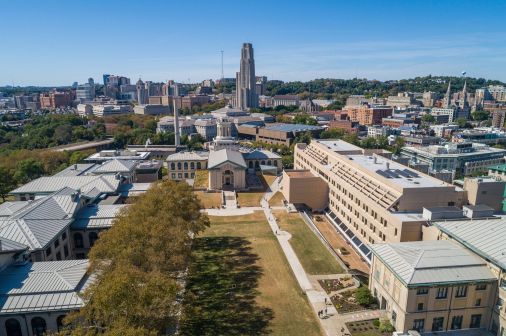Carnegie Mellon pioneers AI project with U.S. Navy
First there was an earthquake. Then came the tsunami. Finally, the nuclear plant failed and the cores melted down.
These three sequential disasters on March 11, 2011, at the Fukushima nuclear power station in Japan showed the limits of existing technology to help figure out the scope of the challenge. Thousands of people died because of the earthquake and flooding; hundreds of thousands face long-term risks from exposure to the radiation released by the meltdowns. It took weeks for relief workers to reach some areas, while experts from around the world tried to figure out how to get inside the contaminated plant and inspect the damage — a necessary first step in order to find solutions.
Technology can help: Drones can go where humans can’t. Artificial intelligence (AI) can analyze social media posts to sort useful information from noise. Computer modeling can predict how hazards might spread. With ideas like those in mind, Carnegie Mellon University is partnering with the Office of Naval Research (ONR) and Naval Research Laboratory to provide students in its School of Computer Science (SCS) collaborative opportunities to develop cutting-edge technologies that improve the ability to respond to disasters.
What happened at Fukushima is a good example, Andrew Moore, dean of the Pittsburgh-based university, told EdScoop.
“In the first few hours after a disaster, one of the biggest problems is ‘the fog of war’ — nobody necessarily knows what’s going on,” Moore said. “You make whatever efforts you have, a combination of different things, to get as accurate information as possible and get it to the right decision makers.”
Moore said that “dozens of very strong faculty around the country” will be conducting research on technologies that could provide assistance in different kinds of disasters. Each professor will have between one and five graduate students working on their project.
The partnership between CMU and the Navy means the students will have access to state-of-the-art facilities and equipment, and innovative new technological methods, ONR said in a statement. The agreement will last up to five years.
“CMU is recognized as a world leader in AI, and we look forward to partnering with them to build the A-plus team that will tackle our future challenges,” said Chief of Naval Research Rear Adm. David Hahn.
ONR and CMU recently cosponsored a workshop on AI and autonomy for humanitarian assistance and disaster relief. “We had folks from at least a dozen different federal agencies, including FEMA and USAID,” Moore said.
Earlier this year CMU announced that it would become the first university to offer an undergraduate degree in artificial intelligence this fall. Moore said there is a great deal of interest in the idea of using AI for challenging tasks like helping robots explore dark, confined spaces or using computer vision in areas where there’s a lot of visual degradation due to smoke or rain. After the Mexico City earthquake in September 2017, CMU sent its robotic snake to the city to help search for survivors in the rubble.
“We do AI toward big goals,” Moore said. “It’s the best way to develop new technologies.” He cited CMU’s pioneering work on driverless vehicles, which led to significant advances in such areas as machine vision.
“It’s very important that we in the AI community are very clear about using this sort of advanced technology for directly and visibly stabilizing and helping lives,” he said. “The second bigger-picture aspect is, where many people are quite understandably [apprehensive] about the risk of robots, that we be sure that we’re inspiring students to look at ways they can help people, rather than things like predicting financial markets.”
Reach the reporter at pwaitster@gmail.com .




